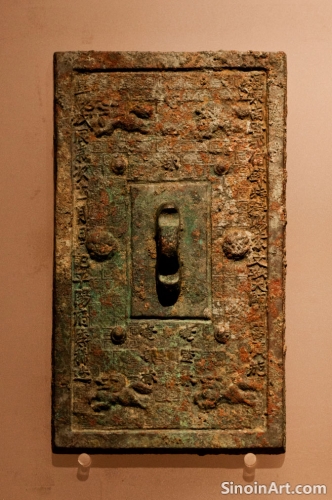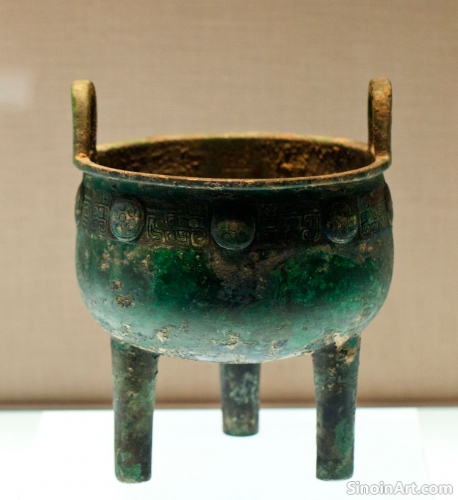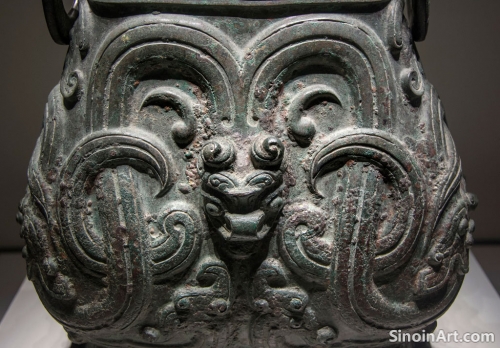The Geometric Patterns of Bronze Ware: Order, Harmony, and Cosmic Significance
|
Beyond figural and animal motifs, geometric patterns played a significant role in the decoration of Chinese bronze ware, conveying a sense of order, balance, and harmony, often associated with a larger understanding of the universe. These patterns were not merely decorative; they were also deeply symbolic. The recurring geometric patterns help to reinforce the ideas of balance, order, and harmony.  Patterns like spirals, meanders, and concentric circles were often used, reflecting an ancient Chinese understanding of the interconnectedness of all things. The patterns also often suggest a belief in cycles and patterns that repeat and recur in both life and the natural world. The careful design and arrangement of these elements also suggest a belief in the underlying order of the universe.  The precise execution of geometric patterns on bronze vessels demonstrates the skill of the craftsmen, and their ability to create visually striking and elegant designs. The ability to precisely render these forms required a great deal of both skill and patience. The underlying structure and harmony of these patterns adds to the overall beauty of the art form.  The use of geometric patterns also reflects a belief in the underlying order and harmony of the cosmos, with many of the patterns mirroring the perceived movements of the celestial bodies and the rhythms of nature. The patterns served not only an aesthetic purpose, but they also helped to communicate the cosmological beliefs of the era. The study of geometric patterns on bronze ware provides a fascinating glimpse into the visual language of ancient Chinese art, revealing the complex interplay between design, symbolism, and a desire to express a more coherent vision of the world. The careful study of these geometric forms helps to connect us to the beliefs and values of the people who made them. |
Tag : bronze geometric patterns, Chinese design, ancient symbolism, art motifs, cosmic harmony
Related information
- The Use of Bronze in Ancient Chinese Astronomical Instruments: Innovation and Precision
- The Preservation of Bronze Ware: Balancing Scientific Methods with Artistic Understanding
- The Influence of Tang Dynasty Kaishu Calligraphy on Bronze Inscriptions
- Bronze Ware and the Development of Ancient Chinese Scientific Thought: Experimentation, Observation, and Knowledge
- The Use of Bronze in Ancient Chinese Public Works: Infrastructure, Irrigation, and City Planning
This article explores the use of bronze in ancient Chinese astronomical instruments, highlighting its role in creating armillary spheres, sundials, and other tools used for observation and measurement, and demonstrating the ingenuity and precision of ancient Chinese scientific thought.
This article explores the preservation of Chinese bronze ware, highlighting the balancing act between scientific analysis and artistic understanding, the need for specialized techniques and ethical considerations, and also the need to provide access and ensure their long-term care.
This article explores the influence of Tang Dynasty Kaishu calligraphy on bronze inscriptions, highlighting how its elegant and structured forms impacted the style of carved characters and reflecting the artistic interplay between calligraphy and metalworking.
This article explores how bronze ware played a role in the development of ancient Chinese scientific thought, highlighting its use in experimentation, observation, the creation of scientific instruments, and the preservation of knowledge, underscoring the connection between technology and the scientific understanding of the world.
This article explores the use of bronze in ancient Chinese public works projects, highlighting its role in surveying, water management, construction, and demonstrating its importance in the development of infrastructure and city planning.